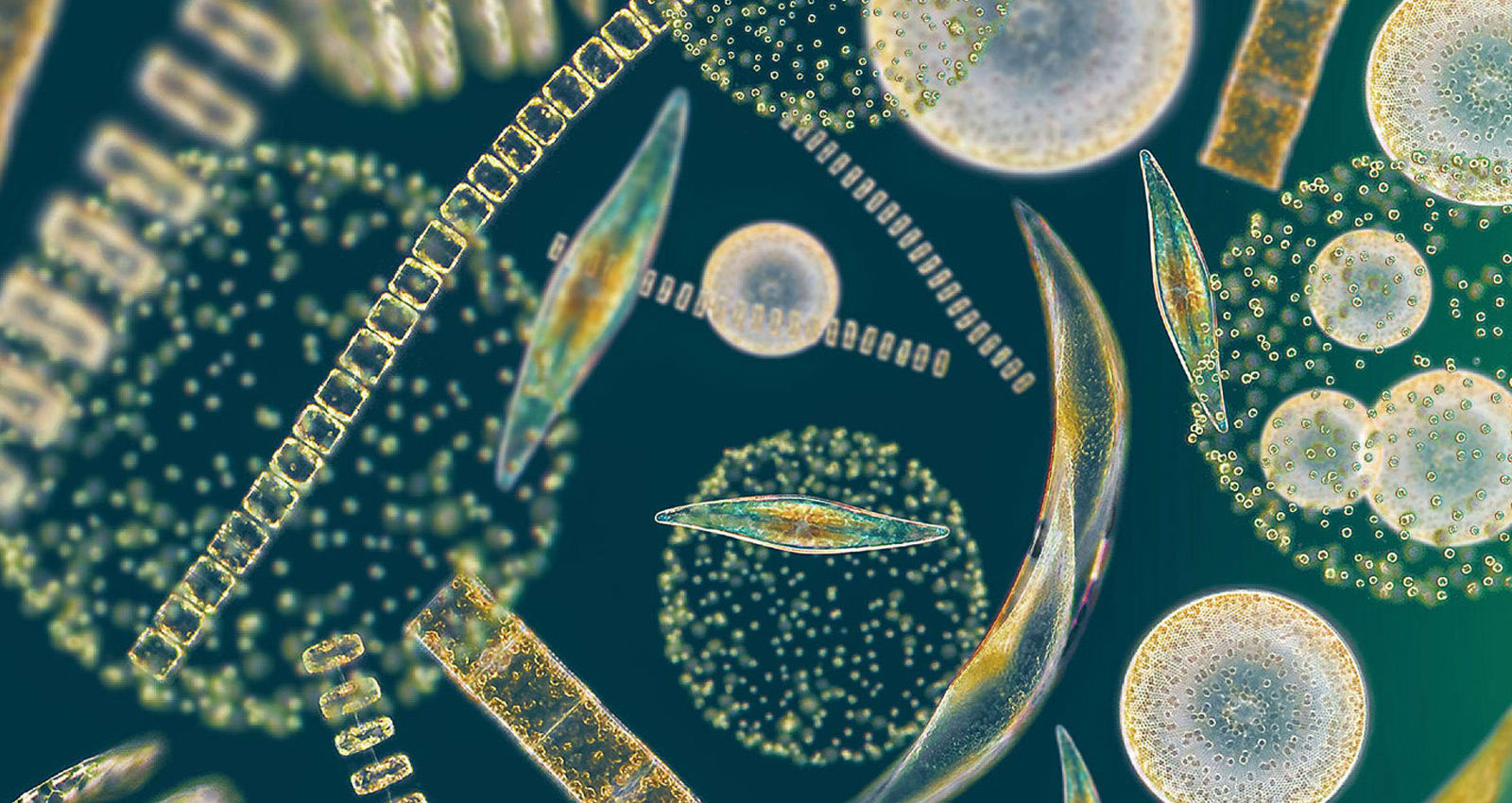The uniqueness of diatoms
Diatoms are unicellular microscopic algae. Their uniqueness lies in their silica cell walls (shells). The shells consist of one to three layers of very specific patterns of tiny nanopores. These patterns form natural photonic crystals and are known to trap and guide visible light efficiently, leading to more light available for photosynthesis.
At the same time the amorphous silica structure protects the algae by blocking UV-light. The shells are also designed for efficient uptake of nutrients and to retain water if the algae is exposed to air.
Furthermore, the shells protect the algae from harmful substances and predators.
Oxygenators of the earth
The silica shells have proven to be an advantage in nature, and diatoms are today abundant. They thrive in every wet corner of the planet, from the vast oceans to the icy surfaces of the poles.
Contributing to 20-25% of the planet’s oxygen, diatoms are the silent heroes of our ecosystem. They are the base of the food web, supporting life forms ranging from the tiniest ciliates to the majestic whales.
With a lineage dating back 200 million years, and an estimated 20,000 to 2,000,000 species, diatoms are a testament to resilience and diversity. Their existence reminds us of the delicate connections within the biosphere of our planet.
Physiology
Diatoms photosynthesize, but they are also able to uptake small organic molecules. Thus, they can survive in darkness without forming resting stages. Diatoms contain chlorophyll a and c and, in addition, different carotenoids such as fucoxanthin, which give them a brownish colour. They store energy in the form of oil (lipids) and a carbohydrate called chrysolaminarin.
Diatoms in short
Size: Diatoms are microscopic, with individual cells ranging from 2 micrometer to half a millimeter in size.
Pore size: The nanopores in diatom frustules (shells) can vary greatly in size between species (10-1000nm is common). However, the pore size is almost identical between individuals of the same species.
Surface Area: Diatoms have a high surface-area-to-volume ratio due to their porous frustules.
Silica Content: Diatoms’ cell walls are composed of silica (silicon dioxide), comprising approximately 30% of the entire diatom’s total composition. The diatoms extract silica from water to construct their frustules. The uptake of silica by diatoms can be considerable, with estimates of over 6.7 billion tons of silicon annually from the waters they inhabit.
Fun facts about diatoms
- Did you know that diatoms are master shell builders, transforming dissolved silicon into a hydrated amorphous silica that’s almost identical to the gemstone opal.
- One liter of sea water can contain as many as ten million diatoms.
- When diatoms die, their silica shells gradually sink to the bottom of oceans and lakes, where they accumulate over thousands of years to form what is known as diatomaceous earth (DE). Unlike the pure, intact structures of living diatoms, diatomaceous earth is often weathered, fragmented, and mixed with other sediments, reducing its structural integrity and purity. Despite this, it has found widespread use in applications such as filtration, pest control in gardening, and as a mild abrasive.
